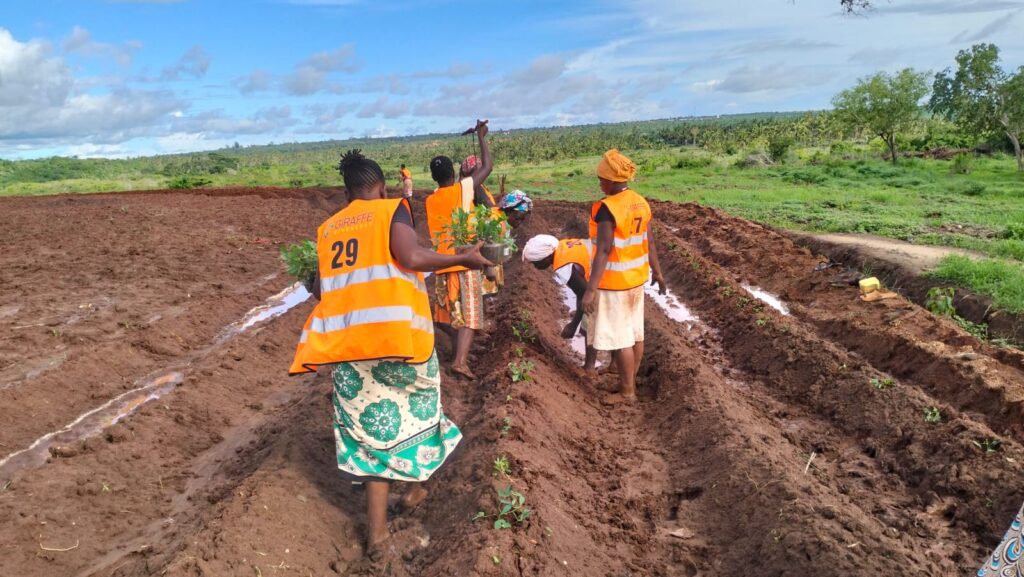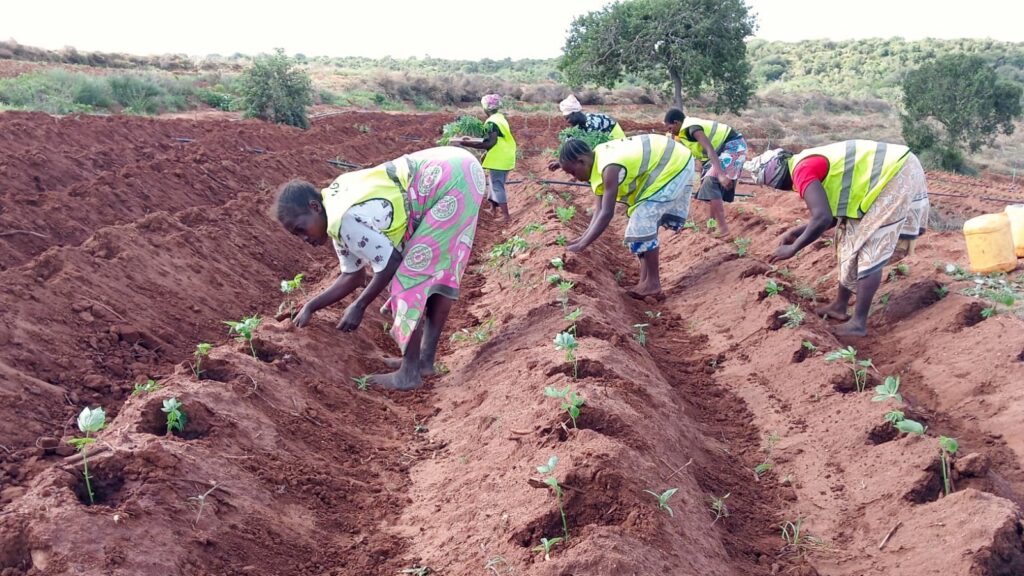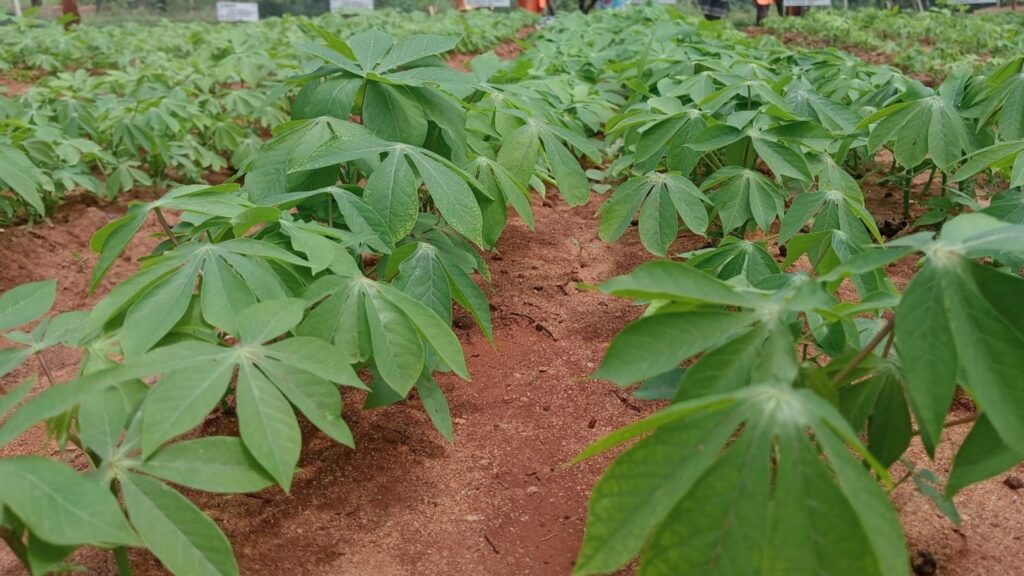Giraffe Bioenergy: Building a Cassava-to-Ethanol Ecosystem in East Africa
Giraffe Bioenergy is a Kenya-based clean cooking startup focused on scaling the domestic production of cassava for ethanol cooking fuel and for food.
The Clean Cooking Alliance (CCA) spoke with Dr. Linda Davis, CEO of Giraffe Bioenergy, about the company’s mission, its unique value proposition, its business-to-business model, and more.
This interview is part of a series of conversations CCA is having with business leaders across the clean cooking sector.

Clean Cooking Alliance (CCA): Tell us about Giraffe Bioenergy’s services.
Dr. Linda Davis (Davis): We are a startup company now entering our growth phase, and our mission is domestically-produced, ethanol cooking fuel, with women as the driving force across the value chain, from cassava production to processing. Currently, ethanol is enjoyed by over one million households in Kenya. What we’re saying at Giraffe Bioenergy is, we have all the ingredients — vast amounts of land, skilled labor, and the political will — to scale up domestic production of cassava-based ethanol. Ours will be the first production unit specifically for Kenya’s ethanol cooking market.
CCA: How do you retail cassava-based ethanol?
Davis: I’m so excited to be in a business-to-business organization. If I can use KOKO Networks as an example, we will be retailing directly to them. KOKO Networks has a fuel supply and operating partnership with Vivo Energy, an independent, pan-African company that markets and distributes Shell-branded products in Kenya. Therefore, our business would be between Giraffe Bioenergy and Vivo Energy, which handles transportation and distribution for KOKO Networks up to a certain point before they manage the last-mile distribution.
We expect our retail operations to be similar for all other customers. There are several emerging ethanol last-mile distributors for clean cooking fuel. For us, it’s straightforward: bring your tanker truck to our farm gate, we will fill it up, you write us a check, and off you go. So, we’re not really in the end-user retail market but primarily in the business wholesale market.
CCA: What is your assessment of ethanol demand in Kenya?
Davis: Our first ethanol plant produces 15 million liters every year. That is still a fraction of current ethanol cooking fuel demand, and an even smaller fraction of where the general ethanol market is expected to be. Under the Kenya National Clean Cooking Strategy, 30% of Kenya’s households are expected to transition to ethanol. That’s over 4 million households multiplied by the 16 liters of ethanol that the average family uses every month. The point is: demand definitely surpasses supply.

CCA: Where do you envision most of your customer base being located?
Davis: Right now, the biggest player in Kenya is KOKO Networks, and their customers are low-income, high-density urban communities. We are talking about people with incomes, who already have a budget dedicated to cooking fuel. What we, as the ethanol production and retail community, are saying is, “Give us the $25-30 you spend on charcoal and kerosene every month, and we will give you a clean, more affordable solution in its place.”
In rural areas, on the other hand, households do not have a budget for cooking fuel. Their fuel is, quote-unquote, free. They are foraging for firewood, cutting trees, or using dried animal waste. It’s a difficult market to enter because you’re telling folks who are already poor, who think that fuel is “free,” that we need $30 from them. I’m sure KOKO and others will support that market at some point, but due to the costs of distribution, ethanol and Liquified Petroleum Gas (LPG) necessarily have to be focused on urban and peri-urban areas right now.
CCA: What makes Giraffe Bioenergy different from others in the clean cooking space?
Davis: We’re unique because we’re the only ones taking advantage of clean cooking as a development issue. Clean cooking is a job creation opportunity. Clean cooking is a rural bioeconomy issue. Our agricultural system, at the scale of the first ethanol plant, will directly engage 1,500 farmers with meaningful employment, good wages, and both employment and harvest-based income. We are deploying a model where women work on our farms while also growing cassava on their own farms. We are really encouraging women to take the learnings from the central nucleus farm and apply them at home to attain high cassava yields, which translate into higher incomes.
Another reason we are doing well is because we are completing the circular economy. Right now, ethanol suppliers in Kenya are making global farmers richer by buying their ethanol, which is highly subsidized. We’re saying, “We can close that loop” because everything is locally produced. We are providing an elegant, local solution to a uniquely sub-Saharan African problem.

CCA: Ethanol can be made from a range of different agricultural products. Why does Giraffe Bioenergy use cassava?
Davis: Ethanol is produced from the starch molecule, regardless of the source. The U.S. produces it from corn; in Europe, from wheat; in Thailand and China, from cassava; basically, from wherever we have excess starch. In Kenya, our choice is guided by the fact that cassava is not considered a staple food crop. The Kenya Ethanol Cooking Fuel Industry Masterplan, released in 2021, evaluated various feedstocks for ethanol production and cassava was identified as a viable option.
Can you eat the cassava grown for ethanol? Absolutely, but there are practical considerations. One cassava tree can yield up to 20 kilograms (kg) of food, which spoils within 24-48 hours. A family can’t consume 20 kg of cassava in 24 hours. So, by virtue of its bulk, cassava is suitable for commercial production, with alternative end-users like ourselves in the ethanol production business.
At Giraffe Bioenergy, I know my tagline is cheesy, but I stand by it: “We stand tall for food and fuel.” You can consume cassava as much as you want, but because we grow it in semi-arid, marginal land that is not suitable for other crops, the real value is bringing farmers into a formal agricultural system and putting money in their pocket to be able to diversify their food options and become food secure. Importantly from a food policy standpoint, we do not substitute cassava for existing food crops grown on fertile land.
Kenya doesn’t have large-scale cassava production, which is why Giraffe Bioenergy had to start from the agricultural level. Initially, I wasn’t enthusiastic about this, but now I am very much a cassava farmer. Cassava makes sense for Kenya.
CCA: Are there other considerations that make Kenya a priority country for developing this business?
Davis: Yes, Kenya is unique for three reasons.
First, Kenya has vast amounts of underutilized, semi-arid land with unreliable rainfall and depleted soils where cassava grows well, so we’re not encroaching on agrarian land.
Second, Kenya recognizes ethanol as a significant solution to the cooking fuel challenge. By 2028, 50% of Kenyans are expected to use LPG, 30% ethanol, and 10% electricity, with the remainder using biogas, firewood, and charcoal. The political will is there.
And finally, Kenya has a developed last-mile ethanol market.

CCA: Are there any barriers to aggregating farmers and land to scale up your production?
Davis: Unlike the flatlands in the American Midwest or the Canadian prairies, in Kenya agricultural land isn’t as contiguous, making mechanization difficult. Additionally, the communities we work in have entered a devastating cycle of self-destruction. The largest income earner in Kilifi County, where we work, is charcoal burning. Young men cut the trees near the road, and when those are gone, they ask for their inheritance, sell their land, and buy motorcycles to go deeper into the forest to produce more charcoal. It is as heartbreaking as it sounds.
For biorefineries to be successful, we need a nucleus farm that we own and operate alongside a smallholder supporting system. We’ve already secured the contiguous lands we need for our first biorefinery, but if I’m compelled to require a larger production share from smallholders due to a lack of contiguous land suitable for a nucleus farm and, therefore, reduce participation as an owner/operator, it could be challenging in the future.
CCA: Who do you see as your primary business partners — at this moment and as your company continues to grow?
Davis: My primary partners are my governance and management team, who help with advising, fundraising, and executing our agricultural operations. We’re also partnering with food producers to commercialize clean seedlings, addressing concerns around food versus fuel. NGOs are key partners in distributing clean seedlings for food to smallholder farmers, since cassava serves as a backstop to maize, especially in semi-arid areas that are increasingly vulnerable to the effects of climate change. Government ministries that focus on energy and agriculture are interested in seeing us succeed in catalyzing both the food and fuel systems. Finally, our investment partners are critical for our early-stage funding.
